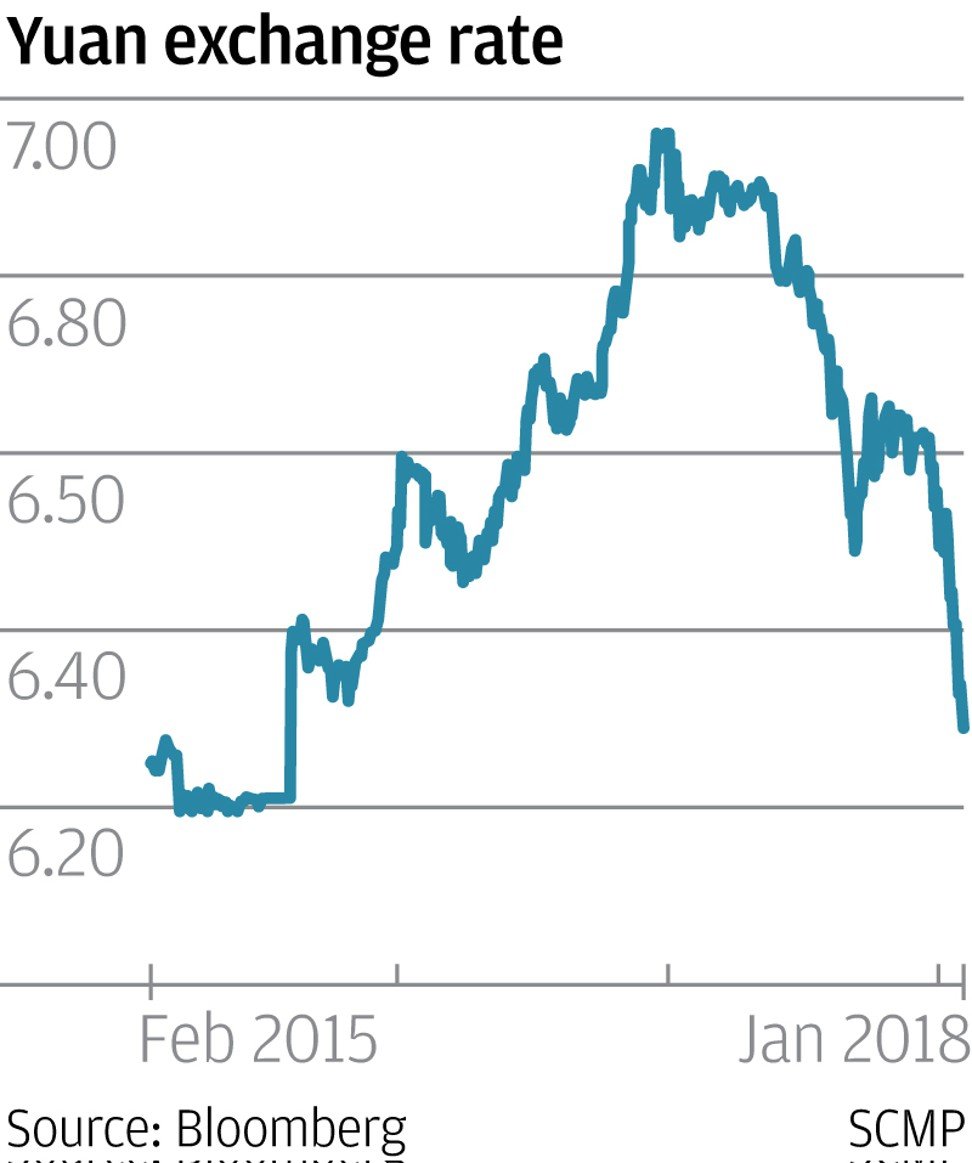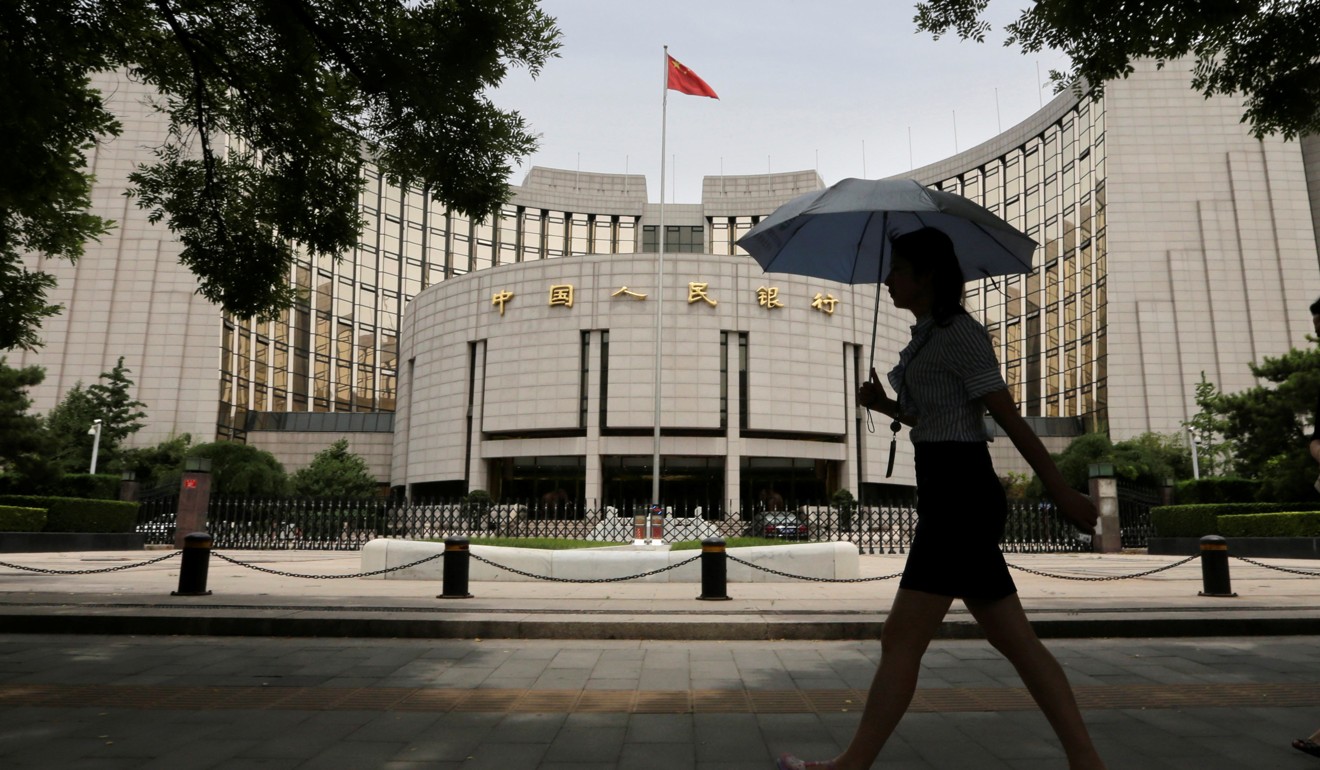
In China, yuan’s rapid gains make exporters uneasy as US dollar weakens
Chinese economists note US preference for a weak dollar to cut trade imbalance
The Chinese currency gained 3.1 per cent against the US dollar in January, but few in China see a stronger yuan as cause for celebration.
Its rapid gains are instead fuelling unease and fears over the negative impact on Chinese exporters, and it has even fanned theories that China is falling victim to a new type of “currency war” started by the US to cut the trade imbalance.

The midpoint of the yuan – which is set by the People’s Bank of China every business day – was raised to 6.3045 per dollar on Thursday, and it was trading at 6.3 by late afternoon. That was its strongest level since it was devalued on August 11, 2015, when the central bank unveiled a new exchange rate formation mechanism that was followed by a continuous decline in the yuan’s value over the next 18 months.

But in contrast to the market panic set off a year ago – when the yuan was heading towards 7 against the dollar – Chinese economists doubted the currency’s rapid gains would threaten recovering exports or the campaign to reduce financial leverage.
“Actually it is the large fall in the US dollar index, rather than the US government’s [anti-dumping] policies on imported solar products and washing machines, that signals the start of a trade war,” according to Zhang Ming, a senior researcher at the Chinese Academy of Social Sciences, a government think tank.
“The fall is in line with the US government’s goals, so it could be promoted by the government wittingly or unwittingly,” Zhang warned in a research note on Tuesday.
The US dollar index, which measures its value against a basket of foreign currencies, has now dropped to 89 – the lowest level since 2015.
Meanwhile, the US president has long accused China of keeping the yuan artificially low to maintain trade advantages. Trump has threatened to label China as a currency manipulator and impose 45 per cent punitive tariffs on Chinese products, but he has yet to do so.
Lu Zhengwei, chief economist at the Shanghai-based Industrial Bank, said that historically US presidents have had an impact on exchange rates, and Trump’s preference for a weak dollar was strong given his campaign promise to slash the trade imbalance.
China’s trade surplus with the United States rose 8.6 per cent last year to a record high of US$275.8 billion, according to the General Administration of Customs.
But Lu noted that stronger economic performances in Europe and Japan were also factors in the weakening US dollar. The euro and Japanese yen are weighted at 57.6 per cent and 13.6 per cent respectively in the dollar index.
“Trump prefers a weak dollar, and it coincides with the trend of decline,” he said.
In China, while mechanisms that encourage inflows, such as stock and bond connects, have fuelled appreciation pressure on the yuan, Lu said the government should make its policy more flexible and make timely adjustments so that the currency does not strengthen too much.
Beijing has not yet fully removed its capital control measures initiated at the end of 2016.
Shen Jianguang, chief economist of Mizuho Securities Asia, said the real effective exchange rate of the yuan had a bigger impact on trade than its value against the dollar.
That rate, indicated by the official CFETS index – which measures the yuan’s value against a basket of major currencies – remained roughly unchanged at 94.85 in 2017, despite its volatility against dollar.
“The authorities should re-examine the capital control measures to offset yuan appreciation pressure and restart the internationalisation push for the currency,” Shen said.

